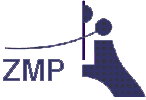
| M.Sc. Mathematical Physics |  |
 |
 |
 |
HistoryHamburg University's department of mathematics was created at the foundation of the university in 1919. The "Mathematische Seminar" quickly became one of the leading mathematics departments of that time, which appointed among others Artin, Blaschke and Hecke. Based on the initiative of these three mathematicians, Einstein was invited to Hamburg to give a public talk. This talk had a tremendous impact: it lead to the creation of a chair for theoretical physics and the appointment of Wilhelm Lenz. The following years brought scientific success: Wilhelm Lenz' student Ernst Ising studied in his PhD thesis the famous Ising model which now carries his name. It remains one of the most important models of mathematical physics. The theoretical physicist Wolfgang Pauli, Nobel Price in Physics in 1945, worked as a Privatdozent at Lenz' institute, until he left for a professorship at ETH Zurich in 1928. It was in 1924 in Hamburg that Pauli started to investigate the structure of atomic spectra which led him to formulate the exclusion principle and to predict the spin of the electron. He received his "venia legendi" (the right to give lectures) from the famous number theorist Erich Hecke on January 30, 1924. This illustrates the fruitful interaction of mathematics and physics in the early days of Hamburg University. Many other famous mathematical physicists spent time as researchers and lecturers at Hamburg University. Among them, the mathematician John von Neumann who was a Privatdozent at Hamburg university in 1929 before he joined Princeton University in 1930. Von Neumann algebras continue to play an important role in mathematical physics. In the 60s Rudolf Haag's pioneering work established their role as the mathematical structures underlying quantum field theory. The influential differential geometer Shiing-Shen Chern obtained his PhD at Hamburg University in 1936 with Wilhelm Blaschke. He had the choice to continue to work on algebra with Artin, but preferred to go to Paris to work with Cartan and extend his expertise in differential geometry. Chern's characteristic classes, which he discovered in 1943, are by now ubiquitous in quantum field theory and string theory, two of the central research fields at Hamburg University. The expulsion of leading scientists under the Nazi government and the Second World War dealt a severe blow to mathematical physics research in Hamburg. After Second World War, the subject gradually recovered and expanded into new research fields. A special highlight was the remarkable Hamburg school in quantum field theory with Haag, Lehmann and Symanzik. Today, the mathematical structure and physical applications of quantum field theory remain core research areas of the Center of Mathematical Physics and the Cluster of Excellence Quantum Universe. In the mathematics department, the famous mathematician Erich Kähler deserves special mention. In addition to his work on Maxwell's electromagnetic theory and Dirac's equation, he initiated the research subject of Kähler geometry. His article "Über eine bemerkenswerte Hermitesche Metrik" (On a remarkable hermitian metric) which appeared in the mathematical journal "Abhandlungen aus dem mathematischen Seminar der Universität Hamburg" led to the development of this research subject. Kähler geometry later began to play a central role in modern field theory and string theory. As the youngest addition to Hamburg University's mathematical physics portfolio, string theory plays a central role in the current research of the University's mathematics and physics department. Moreover, its impact on mathematics and on our understanding of the fundamental structure of matter and space-time is reflected in Hamburg in a way that is unique in Germany. There are several active research groups in the physics department, in the mathematics department, and in the theory research group at DESY, which work on the subject from different angles and in close interdisciplinary cooperation. Their work lead to the interdisciplinary Center of Mathematical Physics, the Cluster of Excellence Quantum Universe as well as the Research Training Group GRK 1670: Mathematics Inspired by String Theory and Quantum Field Theory.
|